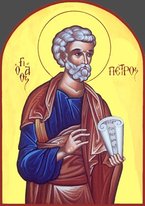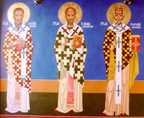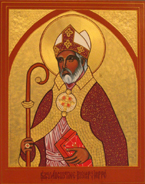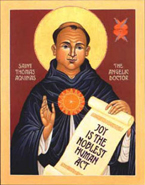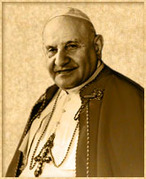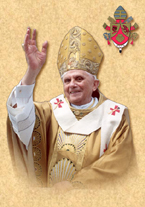Artistic freedom increasingly asserts its rights, even in the liturgy. Church music and secular music are now each influenced by the other. This is particularly clear in the case of the so-called “parody Masses”, in which the text of the Mass was set to a theme or melody that came from secular music, with the result that anyone hearing it might think he was listening to the latest “hit”. It is clear that these opportunities for artistic creativity and the adoption of secular tunes brought danger with them. Music was no longer developing out of prayer, but, with the new demand for artistic autonomy, was now heading away from the liturgy; it was becoming an end in itself, opening the door to new, very different. ways of feeling and of experiencing the world. Music was alienating the liturgy from its true nature. At this point the Council of Trent intervened in the culture war that had broken out. It was made a norm that liturgical music should be at the service of the Word; the use of instruments was substantially reduced; and the difference between secular and sacred music was clearly affirmed. Commentary: We are naive for often thinking that there isn't a war of culture, and that secular culture - in the name of inculturation - is always to be assimilated into the culture of the Church. Whilst the Church speaks of the need for inculturation and interaction with the larger societal ethos, this does not in any way mean that all the elements of secular culture agree with the elements of Catholic worship.
"Parody masses" today are a dime a dozen, whether or not we care to acknowledge this reality. There are many masses celebrated around the world, even in modern Asia, in which music is played and songs are sung such that "anyone hearing it might think he was listening to the latest 'hit'". This is almost always done citing the excuse that it is being "charismatic" or that we need to keep up with the state of the world today. Alarmingly, a good number of prelates themselves are failing to see what is wrong with this cohabitation between the sacred and the secular. The Pope reminds us (once again) in this writing that this "artistic autonomy" which many people seek actually do a great disservice to the Church in that it "[alienates] the liturgy from its true nature". I believe what he means is that the over-humanisation of the liturgy erodes the visibility of its divine dimension. When the music used in the liturgy speaks too much of anthropological expression and sociological sensationalism, the liturgy's celestial timelessness is dissolved in the pool of human manipulation. Leaning to the extreme left by assimilating everything in the name of inculturation is, really, as unjust and unreasonable as the extreme right's ghettoing of itself from any form of cultural interaction for fear of compromise. Whilst we seek to interact with larger societal culture, we need to remember also that the Church too has a culture of its own.
0 Comments
Leave a Reply. |
Categories
All
Archives
December 2021
|
|
FOLLOW DEACON SHERMAN DEACON'S FORMATION FB GROUP
© 2021 Sherman Kuek. All rights reserved.
|

 RSS Feed
RSS Feed
